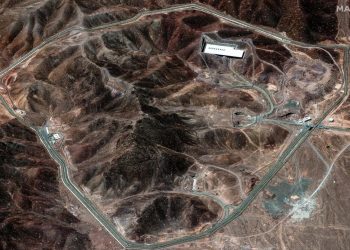Many including me will be amazed to know that the world’s first-ever university was founded by a Muslim woman, Fatima al-Fihri. In the Moroccan city of Fez, she founded a masjid that developed into the famous al-Qarawiyyin university.
Fatima al-Fihri was born around 800 A.D. in the town of Kairouan, in current-day Tunisia. Her family was part of a large migration to Fez from Kairouan. Even though her family did not start wealthy, her father Mohammed al-Fihri became a successful merchant. She and her sister Maryam were well-educated and studied Islamic jurisprudence and the Hadith. Both went on to establish mosques in Fez, Fatima founded Al-Qarawiyyin whereas Maryam founded Al-Andalus.
After the deaths of Fatima’s husband, father, and brother in short succession, Fatima and her only other sibling, Maryam, received a substantial inheritance that guaranteed their financial independence. However, Fatima and her sister were not interested in this money for self-enrichment but instead wanted to help the community.
Both sisters decided to spend a significant sum of their inheritance on rebuilding a local mosque that they felt was too small for the community, as a form of commemoration and charity in their father’s name. But even after completing this project, Fatima continued to think of ways to best use the rest of her inheritance.
She finally decided to build a masjid that would be her form of sadaqah jariyah or continuous charity. And hence, began the construction of the famous Masjid al-Qarawiyyin, named after her birth city. Historical accounts state that Fatima directly supervised and steered the construction process in detail, undoubtedly a testament to her phenomenal dedication.
Fatima ensured that this masjid contained a library to promote it as a place of learning besides worship. It didn’t take long for this masjid to become renowned for its wealth of knowledge and scholarship. This masjid was blessed with leading thinkers from all parts of the world visiting the Qarawiyyin Masjid and University, contributing to its ever-growing library.
She was also extremely devout and sincere in worship and made a religious vow to fast daily from the first day of construction in Ramadan 245 AH/859 CE until the project was completed some two years later, at which point, Fatima offered prayers of gratefulness in the very masjid she had so diligently worked to build.
Masjid Al-Qarawiyyin, one of the largest masjids in North Africa became the home of the university which developed into the foremost center of advanced learning during medieval times in the Mediterranean.
Nearly six decades after its completion in 918 CE, al-Qarawiyyin became the official masjid in the region, where the sultan would attend Friday prayers.
The al-Qarawiyyin University has produced several notable alumni both Muslim and non-Muslim over the years. Gerbert Of Aurillac was a student of the University who later became Pope Sylvester II and went on to introduce Arabic numerals and the concept of zero to Europe. Also, one of the University’s prominent students was the Jewish physician and philosopher, Maimonides. Maimonides was one of the most prolific and influential Torah scholars of the Middle Ages. He compiled and composed the thirteen principles of the Jewish faith.
One of al-Qarawiyyin University’s distinguished Muslim students was Ibn al-Haj al-Fasi, the leading scholar of the Maliki school of thought in his time. He also taught at the university for some time. Other famous Muslim alumni were the Maliki jurist and Sufi philosopher Ibn al-Arabi and the historian and philosopher Ibn Khaldun.
By the 14th century, the university contained the Al-Qarawiyyin Library which remains one of the oldest in the world, preserving some of Islam’s most precious manuscripts. These include volumes from the Muwatta of Imam Malik inscribed on gazelle parchment, the Seerah of Ibn Ishaq, the premier transcript of Ibn Khaldun’s Al-‘Ibar, and a copy of the Quran gifted to the institution in 1602 by Sultan Ahmed al-Mansur. Also, recently rediscovered in the library is an ijazah certificate, written on deer parchment, which some scholars claim to be the oldest surviving predecessor of a Medical Doctorate degree.
Nearly twelve centuries have passed since the founding of al-Qarawiyyin University in 859 and to this day, students of various disciplines continue to graduate from this esteemed institution. This represents the living legacy of Fatima al-Fihri who was dedicated to the Islamic tradition of learning and scholarship and strived to serve humanity for the sake of Allah (SWT).
Today, we take pride and honor in the alma maters that we graduated from. Also, our jobs, income, and future are tied to these institutions. And the architect of all this is none other than Fatima al-Fihri, a Muslim woman.


























